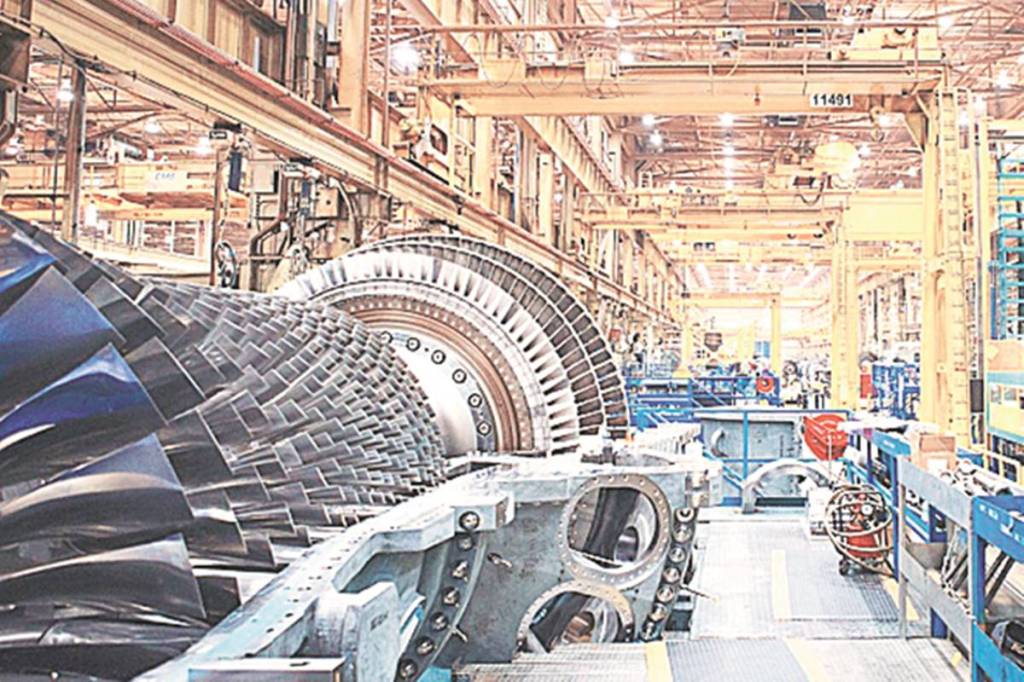Underuse based classification the capital goods segment traditionally has one of the closest linkages to steel use. The major components of capital goods are: heavy electrical equipments, process plant equipments, engineering goods, earth moving equipments, metallurgical machinery, machine tools, textile, plastic machinery, tools dies and moulds.
The description of each of these segments specifically of the first five denotes significant steel intensity. Studies have shown that import components in Metallurgical machinery, machine tools and earthmoving equipments are higher (average around 65%) as compared to other sub-sectors. The output of capital goods segment had a fluctuating growth trend like it rose from 0.3% in FY13 to 3.0% in FY16 and to 4.0% in FY18 and 7.4% during the first 4 months of the current fiscal. Poor investment in technology and development of skilled manpower has been the constraining factors to the fluctuating growth of capital goods segment. Although the contribution of this sector to GDP significantly lags from the levels achieved by China and South Korea, the development of domestic capabilities in capital goods sector appears to be a clear road for self reliance as shown by them.
One of the primary determinants of the growth of capital goods segment was the investment in infrastructure and construction sector eg construction of Power projects, both thermal and renewable power generation, solar capacity, transmission and distribution (requiring heavy electrical equipments and power transmission network), the construction of steel plant modernisation (requiring heavy machinery and engineering equipments), the construction of transport logistics and urban infrastructure (requiring Railways, Wagons and Coaches, roads, ports, airways and coastal network), material handling and mining equipments and farm mechanisation.
Almost all the mega projects announced by India, namely, Bharatmala (roads and bridges), Sagarmala (port led development), make in India programme in defence procurement of ships, submarines, Ujjala programme for electrification of all the villages, all would be needing significant volumes of capital goods. Around 22-23% of India’s steel demand emanates from Machinery and engineering sector and the share of capital goods is likely to be as high as 95% of this sectoral demand.
The high import component in most of the capital goods components indicate strongly that there is an imperative need for technology and innovation in this sector to achieve value addition and to exploit the huge growth potential of the sector. For instance, NSP 2017 has indicated that around $138 billion funds would be needed to install 300 MT of Crude steel capacity by 2030-31 and approx.
$55 billion worth of steel plants and machinery would be required in addition to imports of millions valued spare parts. It is estimated from the past records that around $28 billion worth of plants and machinery would be imported.
It goes to the credit of ministry of steel for charting out a strategy of creating manufacturing hubs in India by establishing close understanding with foreign equipment suppliers to create manufacturing facilities under joint ventures along with indigenous manufacturers inside the country with appropriate technology transfer (TT). It would help the government to demonstrate an effective domestic content policy in cases of large procurement by the steel plants for their capacity augmentation process.
Out of the two processes of TT, the one with driving TT through local partnership ventures is preferable in case of India compared to strategic takeovers for acquiring critical technology (followed by Korea). There are strong reasons for this. Excess capacity in steel has been plaguing the global market for the last one decade.
Current level of global steel production (1.63 billion/t) against the effective capacity of 2.25 billion/t would imply that higher level of capacity utilisation from the current 76% would adequately be taken care of by the existing installed capacity and hence the additional order of plants and machinery for fresh capacity creation in advanced countries would be very limited. Under the circumstances, there is a significant volume of fresh order potential for Paul wurth, Primetals, Nippon steel, Daneilli Corus and the like from capacity expansion in India. The setting up of manufacturing base under JV in India in association with Indian manufacturers (BHEL, BEML, L&T etc) would transform this potential into realities. For supply of spare parts the SME sector must come forward to forge an alliance with exporters from other countries.
In order to realise this, a few steps are urgently needed. The government needs to ensure a steady order flow to these JVs either through the PSUs (SAIL, RINL, NMDC, NIML) or through the private players who would need to be reassured of the cost and quality worthiness of the domestically available equipments as against second hand imported equipments also.
The stiff constraints faced by HEC, MAMC, HMT etc in terms of inadequate investment in technology up gradation, lack of order flows etc must not be repeated. The collaborations between steel plants, mining companies with capital goods manufacturers needs to be scaled up at a higher level to make these transcend into partnership bonds. It is necessary to cut down manufacturing costs by putting a cap on power and other energy costs, the high freight charges of transporting raw materials and high capital costs.
This would enable the equipment manufactures set under JVs to make their exports cost competitive in the global market. Lastly the indigenous fabrication of equipments out of designs and drawings under TT would require re skilling and up skilling of the existing workforce and training of fresh recruits.
There is also a need to highlight the success stories of domestic CG players like BHEL and BEML (in manufacturing of High speed wagons and Metro coaches) in order to attract private corporate investment in setting up new facilities for process and plant machineries and equipments.
(The author is the DG of Institute of Steel Growth and Development)


